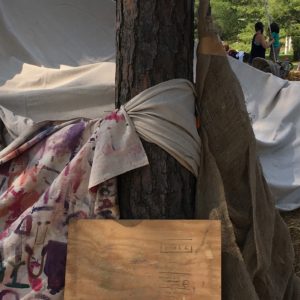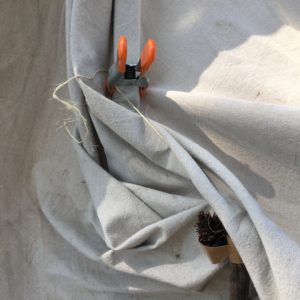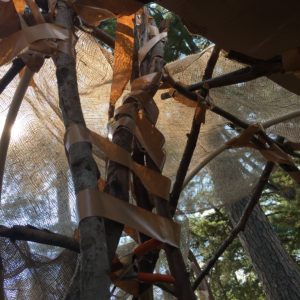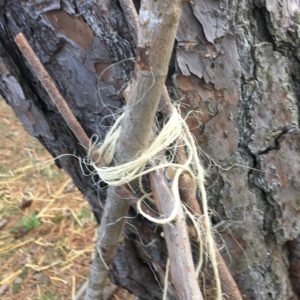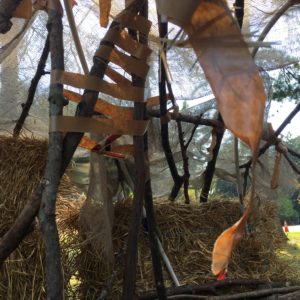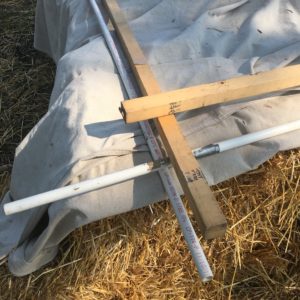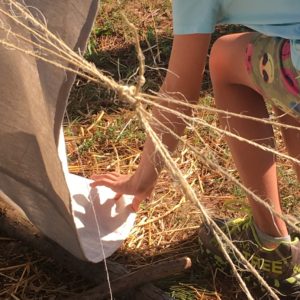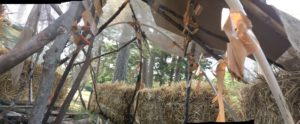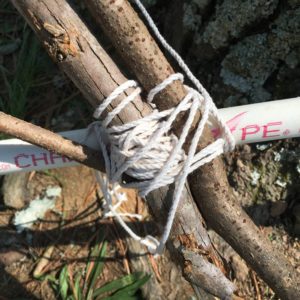 The Power to Make Materials Do as You Please – Mastery Play
The Power to Make Materials Do as You Please – Mastery Play
Claude Stephens
One of the things I most enjoy about observing children in free-play environments is watching them explore how to control materials in order to execute the designs they envision. I have learned to imagine what is going on in their minds as they go through trial and error iterations. Try this. Not quite right. Try that. Better. Wait, maybe this will work better. Good enough. Or maybe this…YES! It would be so simple to step in with a “let me show you how to do that” lesson. But that defeats the reason for free-play in the first place. Here’s another reason…their ideas are often better. Way better.
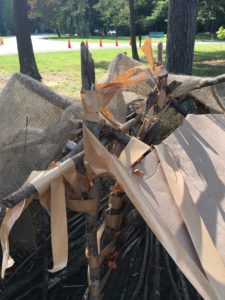 Children have an enormous curiosity for how to join one thing to another. Providing opportunities for that type of mastery play is important when provisioning free-play environments. The Children at Play Network creates free-play environments that provide tape, string, clips, twine and rope. Other opportunities for joinery are provided by nature in the form of gravity and friction.
Children have an enormous curiosity for how to join one thing to another. Providing opportunities for that type of mastery play is important when provisioning free-play environments. The Children at Play Network creates free-play environments that provide tape, string, clips, twine and rope. Other opportunities for joinery are provided by nature in the form of gravity and friction.
One way to fight the natural tendency for the adult mind to step clumsily into the free-play environment with lessons in knot tying, how much tape might be needed, or a better way is to take on the task of documentation. If that is done with a camera it’s helpful to use your camera in a subtle way. Most children have a sixth sense for when a camera is pointed their way.
Here’s a few observations and photographs from a recent free-play day at Bernheim:
Tying a Stick to a Tree to Support a Tarp
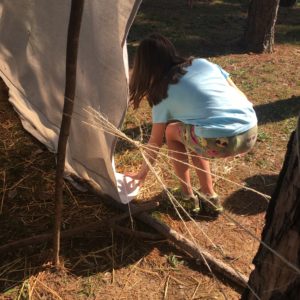 A young girl was engaged in the process of securing a vertical stick to a tree in order to stretch tight a tarp she needed as a wall for her shelter. Because the stick was holding up a tarp it couldn’t quite reach all the way to the tree. It presented a fairly complex set of design challenges.
A young girl was engaged in the process of securing a vertical stick to a tree in order to stretch tight a tarp she needed as a wall for her shelter. Because the stick was holding up a tarp it couldn’t quite reach all the way to the tree. It presented a fairly complex set of design challenges.
- The design process required assistance from other children because she couldn’t both hold the stick and tie it up at the same time.
- The stick needed to remain vertical without spinning.
- The attachment had to work across a distance.
- It had to be strong enough to support the tarp.
The picture here shows the final solution derived from multiple earlier less desirable solutions. Her starting point was to use an additional tarp that she wrapped around the tree and the stick. She abandoned that technique after finding it difficult to tie thick fabric. She used tape but the tape simply tore. She tried one string but one string allowed the vertical stick to spin out of place easily. She tried working alone but found she needed help from someone else to hold things while she tied the string. She found that multiple loops worked fairly well but finally decided to tie them together in the middle which tightened everything up. I watched the evolution of her design process from a distance over the course of about 40 minutes. At any given point an adult could have stepped in with their “let me help you” lesson but I was on guard to run interference in the event that seemed likely. She was in the flow. Nothing but getting the stick to conform to her design idea was on her mind.
Free-play environments work best when adults hold space for children to exercise their play intentions without interference. It is work defined mostly by constraint. You create an environment of possibility without a preconceived idea of how that possibility will unfold. If this young lady grows up to become an engineer I will be the first to drive across the bridge she builds. I have full confidence in her already.
Here are a few additional pictures of joinery techniques from the day. Some better than others but all of them perfect.
